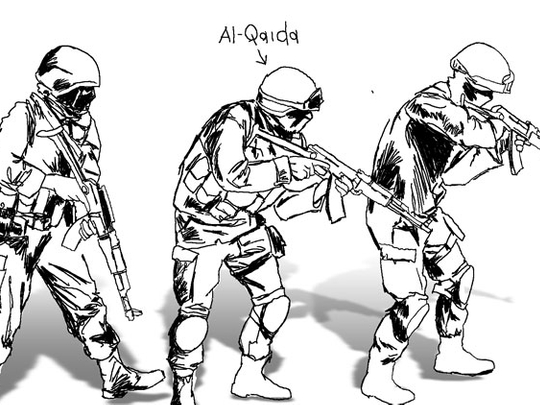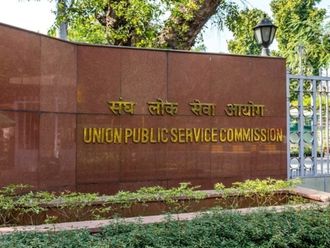
The co-ordinated suicide and firearms attacks in the heart of Kabul on Monday, January 18, attest to an alarming surge in the Taliban's capabilities and a very real threat to Hamid Karzai's hold on the capital.
Up to 20 suicide bombers and as many gunmen were able to breach security and enter Kabul's most heavily protected zone, Pashtunistan Square, which houses the Presidential Palace (where the Afghan president was swearing in his new Cabinet), the Ministry of Justice and the Serena Hotel.
Security in Kabul was formally handed over to Afghan troops in August 2008, but recent months have seen increasingly brazen attacks. On October 28, 2009, a similar but smaller-scale series of suicide bombings and shootings killed six UN workers in a central Kabul guest house and 14 other people across the city centre.
Monday's attacks claimed five lives and wounded 71 people. The toll would have been much greater had not a truckload of explosives destined for Pashtunistan Square been stopped at a checkpoint.
Nevertheless, it was the biggest and most complex attack on the capital since the Taliban was defeated there in 2001.
Infiltration
The fact that such a large number of gunmen and bombers were able to go through the checkpoints carrying weapons, ammunition and explosives suggests that the Taliban have infiltrated the capital's security apparatus.
When US President Barack Obama announced a July 2011 deadline for troop withdrawal from Afghanistan he unwittingly reduced the pool of indigenous military and security personnel willing to work alongside the US. Once Nato leaves, the Taliban will be free to exact a ferocious revenge on collaborators.
The Taliban, benefiting from the experience of its ally, Al Qaida, in Iraq, is increasingly focusing on the intelligence aspect of its planning.
The December 31, 2009 suicide attack by Jordanian triple agent Doctor Humam Khalil Al Balawi on a CIA base concealed within US military stronghold Fort Chapman in Khost is a case in point.
The attack was the greatest disaster for the CIA since the 1983 Beirut US embassy bombing and killed seven agents, including their top Al Qaida expert, as well as Al Balawi's Jordanian General Intelligence Department (GID) ‘handler'. The US intelligence community journal Stratfor said it was the security equivalent of ‘sinking an aircraft carrier in a naval war'.
The logistics of the Khost plot point to a serious, evolving and increasingly interconnected Al Qaida/Taliban intelligence network stretching from Jordan to Pakistan.
The GID believed they had recruited Al Balawi, who had been sentenced for running an extremist website, in an Amman jail in 2008. It is clear, however, that Al Qaida men in Jordan were in on the ‘sting' from the outset since Al Balawi was able to give the GID, and subsequently the CIA, ‘actionable intelligence' to boost his credibility.
Claiming that he was on the track of Al Qaida deputy Ayman Al Zawahiri, Al Balawi was moved to Pakistan under cover of pursuing his medical training. Instead, he continued to pen extremist articles under the pseudonym Al Khourasani (the Afghani) and boasted online that he had joined the Afghan Taliban who would later identify his Khost target and carried out the necessary reconnaissance.
Through his contacts in Al Qaida and the Afghan Taliban, Al Balawi was able to access the Pakistani Taliban (TTP) leadership with whom he would plan the suicide attack and who would subsequently furnish him with explosives.
Collaboration
The extent of collaboration, and the complicated web of logistics and intelligence, was fully revealed in Al Balawi's video-taped ‘will and testament'. In it, he is seated next to TTP leader Hakimullah Mehsud (who does not speak Arabic) and explains that his mission is in retaliation to the US drone attack that killed former TTP emir Beitullah Mehsud in August 2009. Those drone attacks were launched from Fort Chapman in Khost. The video and a transcript (translated into several languages) was immediately available from Al Qaida's Global Islamic Media Front.
The point is that Karzai and his US allies are no longer battling Mullah Omar's Taliban alone.
In his ‘will and testament', Al Balawi spoke of the ‘emigrants who were hosted by Beitullah Mehsud'. This is the first confirmation that the TTP is welcoming foreign extremists, probably Al Qaida fighters, into its ranks.
The TTP, then, is no longer a nationalist entity with a Pakistan-centric agenda, as was previously supposed, but a multinational one that is looking increasingly outwards ... first, towards Afghanistan and the US occupying forces there.
That the Afghan Taliban, TTP, Al Qaida (and an assortment of linked groups), are actively co-operating within Afghanistan was acknowledged by Pakistani President Asif Ali Zardari who, in a January 19 telephone call to Karzai, spoke of their shared fight against ‘a common enemy'.
Increasingly surrounded by a clever and diverse alliance of enemies whose languages and culture they do not understand, the US has never been worse placed in its many Middle Eastern adventures. Obama's ‘surge' of 30,000 extra troops in Afghanistan may well have come too late.
Mullah Omar's Afghan Taliban have been establishing ‘shadow' administrations throughout Afghanistan and are in effective control of much of the country.
The January 18 attacks, with all that they imply, bring the Taliban and its allies closer to their goal of toppling the Karzai government by taking Kabul.
Abdel Bari Atwan is editor of the pan-Arab newspaper Al Quds Al Arabi.








